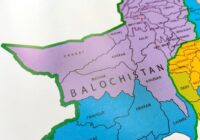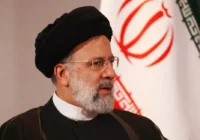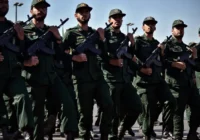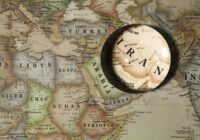Two distinct international conversations focus on the Islamic Republic of Iran. First, as the conflict in the Middle East rages on, experts and policymakers have been engaged in discourse about Iran’s intention to speed up its development of nuclear weapons. At the same time, since the death of Mahsa Amini in 2022 at the hands of Iran’s authorities, many have been engaged in discussions around the regime’s efforts to repress the rights of Iranian women. What is missing from the conversations on Iran’s nuclear program — and the mainstream dialogue on gender and nuclear weapons — is how the acquisition of nuclear weapons would impact Iranian women. The development of nuclear weapons would provide Iranian authorities more leverage to intensify their efforts to repress the fundamental rights of Iranian citizens. Therefore, the international community must consider how the emergence of a nuclear-armed Iran could affect the rights of Iranian women.
In civil society spaces, limited discussions on the intersection of gender and nuclear weapons exist. The few discussions that do take place focus on the disproportionate harm caused to women and girls from nuclear weapons use and testing, as well as the persistent underrepresentation of women in decision-making processes regarding nuclear weapons. Moreover, conversations around nuclear weapons remain highly gendered, with socially constructed norms framing the willingness to use or threaten to use nuclear weapons as inherently masculine. This male-centric narrative has not only marginalized diverse voices and reinforced gender stereotypes but also impeded progress toward broader nonproliferation and disarmament goals, overlooking how nuclear proliferation reinforces power dynamics that deepen inequalities.
Iran’s repression of women’s rights
On September 16, 2022, Iran’s “morality” police stopped and arrested 22-year-old Mahsa Amini for not complying with the regime’s harsh hijab laws, and she later died in custody. In response to Amini’s unlawful death, protests led by women against the Iranian regime’s repressive laws erupted in Tehran. Two years after Amini’s death, the Iranian regime continues to crack down on women’s fundamental rights. In September 2024, a UN Independent International Fact-Finding Mission reported increased crackdowns on women’s rights activism in 2024. Specifically, even as mass protests subsided, the regime’s authorities enacted harsher measures, such as the death penalty, to eliminate activism that advocates for fundamental human rights. In 2024, Iran reportedly executed 901 individuals, including activists protesting the regime’s repressive hijab laws and death penalties.
Iranian authorities also implemented even harsher measures to crack down on women who refuse to comply with the regime’s hijab mandates. In April 2024, Tehran’s police force implemented the “Noor” (meaning light in Persian) plan, which allows the state to deploy police officers throughout Iran to arrest women who the police deem as not abiding by the veiling laws. State officials also sought to expand measures to increase surveillance to monitor hijab compliance. For instance, according to the UN Fact-Finding Report, the regime authorized the use of drones to surveil compliance with the veiling laws.
What would it mean for Iranian women if Iran becomes a nuclear-armed state?
A central premise of this discussion is that, when a state acquires nuclear weapon capabilities, it can alter its domestic politics. One of the drivers behind a state pursuing nuclear weapons is using such weapons as “political tools to advance parochial domestic and bureaucratic interests.” This motivation suggests that nuclear weapons can provide the regime’s leadership with greater political grasp and legitimacy. In Iran’s case, this may mean that the state might use the rhetoric that it acquired the bomb to protect Iranian citizens from its adversary Israel – as the Supreme Leader of Iran had claimed back in 2015 — thereby suppressing dissent among state officials and giving the state a tighter grip on all aspects of domestic governance. This would give the Iranian state greater power to enforce its repressive measures more effectively.
Because Iran is a signatory to the Non-Proliferation Treaty (NPT), its acquisition of enough fissile material to produce nuclear weapons would be a violation of the treaty. As a result, the international community could potentially impose additional sanctions, isolate the state diplomatically or even subject it to military action — all measures that would disproportionately harm the marginalized communities of Iran, particularly Iranian women and girls, as they are more vulnerable to the impacts of economic sanctions and forced displacement.
Furthermore, if Iran acquires nuclear weapons, it could wield increased leverage over the international community, using its nuclear capabilities as a shield against external pressure. The regime could implement further restrictions on international development agencies and aid workers who aim to provide Iranian women and girls access to education and healthcare. Pakistan is an example of how nuclear weapons can empower regimes and cover up human rights violations and development. Since acquiring nuclear weapons in 1998, Pakistan has used its status as a nuclear-armed state to bolster its international legitimacy and shield itself from external scrutiny. Pakistan’s military has used its nuclear arsenal, initially justified as a deterrence measure against India, to consolidate power by leveraging the threat of external enemies to maintain control.
Balochistan, a region divided between Iran, Afghanistan, and Pakistan, has particularly manifested the abuse of nuclear weapons through its nuclear testing. Balochistan has also been marked by extreme poverty and human rights abuses, including torture, arbitrary detention and the suppression of nationalist movements. The military has justified these actions as critical to national security, thus evading both domestic and global accountability. Due to military resistance to reconciliation and development efforts, Balochistan remains disproportionately underdeveloped. This case suggests that if Iran acquires nuclear weapons, it could similarly use them to suppress development initiatives and human rights efforts, making it even harder for the international community to intervene effectively.
Policy implications for the international community
The ultimate goal for groups such as the P5+1 (UN permanent members) should be to establish an agreement like the Joint Comprehensive Plan of Action (JCPOA), a landmark agreement between Iran and the P5+1, which includes the United States. Under the agreement, Iran agreed to deconstruct much of its nuclear program and allow international inspectors increased access to its nuclear facilities. The significant deal forced Iran to halt the development of weapons-grade fissile materials. In 2018, the US withdrew from the agreement. Unfortunately, in the backdrop of the current conflict in the Middle East, of which Iran is a key actor as it backs groups such as Hamas, Hezbollah and the Houthis, a formal diplomatic agreement like the JCPOA is unlikely to come to fruition.
Nevertheless, the international community should aim to seek informal deals in the interim, not only focusing on limiting Iran’s nuclear capacity but also on protecting human rights. Thus far, the Director General of the International Atomic Energy Agency (IAEA), Rafael Grossi, met with officials in Tehran and reported that Iran has agreed to cap uranium enrichment at 60%. Though this doesn’t ease the broader concern of Iran’s nuclear program, as once enrichment reaches 20%, it becomes relatively easy to continue enriching it to the weapons-grade level of 90%, Grossi’s meeting was still a step in a positive direction.
Similarly, another step in the right direction was when officials from the UK, Germany and France engaged in talks with Iran; the parties agreed to continue diplomatic dialogue in the future. More recently, at the 2025 World Economic Forum Annual Meeting in Davos, Switzerland, Tehran “delivered a conciliatory message to Western leaders,” suggesting that it is not pursuing nuclear weapons; the West should hold Iran accountable for this declaration.
The international community must seize every opportunity to integrate human rights, particularly the treatment of women and girls, into discussions on Iran’s nuclear ambitions. By incorporating these issues into informal agreements and confidence-building measures, states can address the immediate threat posed by Iran’s nuclear program and lay the groundwork for broader dialogue and agreements that prioritize the protection of fundamental rights. Of course, the international community would need to provide Iran incentives to halt its nuclear program and alter its domestic policies. Such incentives could include sanctions relief, which might be attractive to Iran as it currently faces a faltering economy. Furthermore, the international community must reiterate to Iran that if the country adheres to the NPT, its rights as a signatory of the treaty will be respected, which includes providing the state with the necessary support for civilian nuclear programs.
The Islamic Republic of Iran continues to repress the fundamental rights of its citizens. As this treatment continues, the international community, including individuals and groups in both the policy and civil society spheres, must integrate conversations about Iranian women’s rights into broader security issues. Furthermore, when conceptualizing gender and nuclear weapons, it is not enough to focus solely on the disproportionate harm caused to women and girls by nuclear weapons use or the gendered narratives in policy spaces. It is key to examine how nuclear proliferation enables repressive regimes to consolidate power further and deepen gender inequalities. Integrating a human rights framework into the discourse on Iran’s nuclear program is essential to addressing both the immediate security threats posed by Iran and the long-term impacts on Iranian women’s fundamental freedoms.
[Liam Roman edited this piece.]
The views expressed in this article are the author’s own and do not necessarily reflect Fair Observer’s editorial policy.
Support Fair Observer
We rely on your support for our independence, diversity and quality.
For more than 10 years, Fair Observer has been free, fair and independent. No billionaire owns us, no advertisers control us. We are a reader-supported nonprofit. Unlike many other publications, we keep our content free for readers regardless of where they live or whether they can afford to pay. We have no paywalls and no ads.
In the post-truth era of fake news, echo chambers and filter bubbles, we publish a plurality of perspectives from around the world. Anyone can publish with us, but everyone goes through a rigorous editorial process. So, you get fact-checked, well-reasoned content instead of noise.
We publish 2,500+ voices from 90+ countries. We also conduct education and training programs
on subjects ranging from digital media and journalism to writing and critical thinking. This
doesn’t come cheap. Servers, editors, trainers and web developers cost
money.
Please consider supporting us on a regular basis as a recurring donor or a
sustaining member.
Will you support FO’s journalism?
We rely on your support for our independence, diversity and quality.









Comment